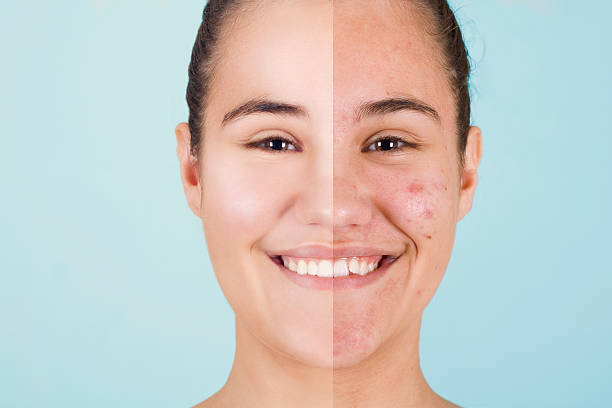Killing acne bacteria quickly typically involves treatments that target the bacteria responsible for acne, Propionibacterium acnes (now called Cutibacterium acnes). Here are some common and effective methods:
- Benzoyl Peroxide: One of the most effective over-the-counter treatments for acne. It works by killing acne-causing bacteria and reducing inflammation. It can start working in as little as 5 days.
- Salicylic Acid: This is a beta-hydroxy acid (BHA) that helps exfoliate the skin, unclog pores, and reduce inflammation. While it doesn’t kill bacteria directly, it creates an environment that’s less favorable for bacterial growth.
- Tea Tree Oil: A natural antibacterial agent that can be effective against acne bacteria. It can take a bit longer to see results compared to benzoyl peroxide but is generally gentler on the skin.
- Topical Antibiotics: Prescribed by a doctor, topical antibiotics like clindamycin or erythromycin directly target acne bacteria. These are often used in combination with other treatments.
- Oral Antibiotics: For more severe cases, doctors may prescribe oral antibiotics like doxycycline or minocycline, which target bacteria throughout the body, not just on the skin.
- Retinoids: Though primarily used for their exfoliating properties, retinoids can also help reduce the bacterial population by keeping pores clear. Prescription options like tretinoin are more potent than over-the-counter retinoids.
- Blue Light Therapy: This treatment uses specific wavelengths of light to kill acne-causing bacteria. It’s non-invasive and can be effective over several sessions.
- Zinc Supplements: Zinc has anti-inflammatory and antibacterial properties and can help reduce acne when taken as a supplement.
Combining these methods, especially under the guidance of a dermatologist, can often lead to faster and more effective results. It’s important to patch-test new treatments to avoid irritation and consult with a healthcare professional for severe cases.

What is the new treatment for acne?
Recent advancements in acne treatment have introduced several new options, focusing on targeting the underlying causes of acne more effectively and with fewer side effects. Here are some of the newer treatmen:ts
- Topical Minocycline: Traditionally an oral antibiotic, minocycline is now available in a topical foam form (e.g., Amzeeq). This allows the antibiotic to be applied directly to the skin, reducing systemic side effects.
- Clascoterone (Winlevi): This is a relatively new topical androgen receptor inhibitor. It works by blocking the hormones that contribute to acne, offering a non-antibiotic option for reducing oil production and inflammation.
- Trifarotene (Aklief): A newer topical retinoid specifically designed to treat both facial and truncal (body) acne. It’s more selective in targeting the receptors that cause acne, potentially reducing side effects like irritation.
- Light and Laser Therapies: Advancements in light and laser treatments, including blue light therapy and fractional laser therapy, have made these options more effective with fewer sessions required. These treatments target acne bacteria and reduce inflammation, with minimal downtime.
- Hydrocolloid Dressings: These are not entirely new but have gained popularity as an acne treatment. These dressings absorb excess fluid, reduce inflammation, and protect acne lesions from external irritants. They are often used overnight to flatten pimples quickly.
- Microneedling with Radiofrequency: This treatment combines traditional microneedling with radiofrequency energy to enhance collagen production and reduce acne scars. It also has benefits for active acne by reducing sebaceous gland activity.
- CBD and Cannabinoid-Based Products: There is increasing research into the use of cannabidiol (CBD) and other cannabinoids in acne treatment. These compounds have anti-inflammatory properties and may help regulate oil production.
- Probiotics and Skin Microbiome Treatments: Some newer treatments focus on balancing the skin’s microbiome rather than just killing bacteria. These include topical probiotics and prebiotics, which aim to restore healthy bacteria on the skin.
These treatments are often used in combination with traditional therapies to enhance effectiveness and reduce the risk of antibiotic resistance. As with any acne treatment, it’s essential to consult a dermatologist to determine the best approach based on individual skin type and acne severity.
4o
